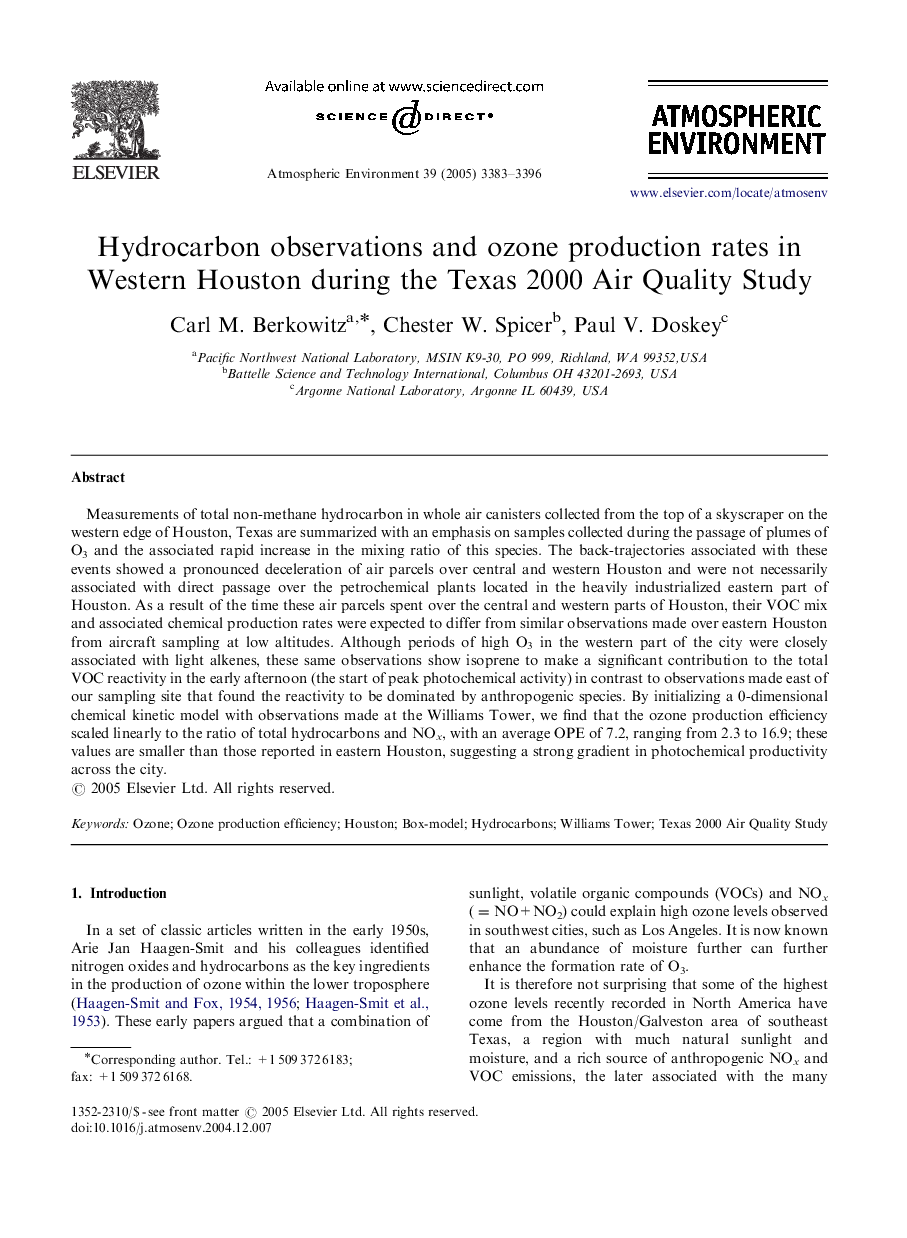| Article ID | Journal | Published Year | Pages | File Type |
|---|---|---|---|---|
| 4445497 | Atmospheric Environment | 2005 | 14 Pages |
Measurements of total non-methane hydrocarbon in whole air canisters collected from the top of a skyscraper on the western edge of Houston, Texas are summarized with an emphasis on samples collected during the passage of plumes of O3 and the associated rapid increase in the mixing ratio of this species. The back-trajectories associated with these events showed a pronounced deceleration of air parcels over central and western Houston and were not necessarily associated with direct passage over the petrochemical plants located in the heavily industrialized eastern part of Houston. As a result of the time these air parcels spent over the central and western parts of Houston, their VOC mix and associated chemical production rates were expected to differ from similar observations made over eastern Houston from aircraft sampling at low altitudes. Although periods of high O3 in the western part of the city were closely associated with light alkenes, these same observations show isoprene to make a significant contribution to the total VOC reactivity in the early afternoon (the start of peak photochemical activity) in contrast to observations made east of our sampling site that found the reactivity to be dominated by anthropogenic species. By initializing a 0-dimensional chemical kinetic model with observations made at the Williams Tower, we find that the ozone production efficiency scaled linearly to the ratio of total hydrocarbons and NOx, with an average OPE of 7.2, ranging from 2.3 to 16.9; these values are smaller than those reported in eastern Houston, suggesting a strong gradient in photochemical productivity across the city.
